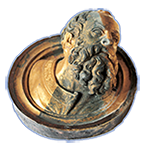NAA of human remains of the XVI-XVII centuries from the Moscow Kremlin necropolises, Russia and medieval glass bracelets found at the Dubna settlement, Russia, was carried out at the FLNP basic facilities – the IREN research facility and the IBR-2 pulsed fast reactor. We studied the rib fragment from the burial place of the son of Tsar Ivan the Terrible, Tsarevich Ivan Ivanovich; the rib...
Both archaeologists and conservators can benefit from the investigations of cultural heritage and art objects carried out by means of neutrons. Inner morphology, provenance, manufacturing techniques, workshop assignation, as well as fake identification, conservation or preservation are the usual questions.
Neutrons are perfect tools of cultural heritage studies due to their deep penetration...
The riskiest part in the restoration process of paintings is the removal of the old varnish layer. It is subject of controversy between supporters of total removal and supporters of the patina. To remove varnish, the restorer applies solvents and abrades the surface. Often the solvents penetrate into the deeper layers and weaken the structure of the pictorial layer. Essential elements can be...
A bronze horse harness recovered at roman colony “Bedaium” (50-200 AD, now “Seebruck am Chiemsee”) has been investigated by means of x-ray diffraction using a lab-based XRD instrument. The patina of such ancient bronzes impede access to the bulk material with standard Cu-XRD. Depending on it´s thickness, hard Mo radiation with higher penetration depth might enable a non-destructive analysis of...

